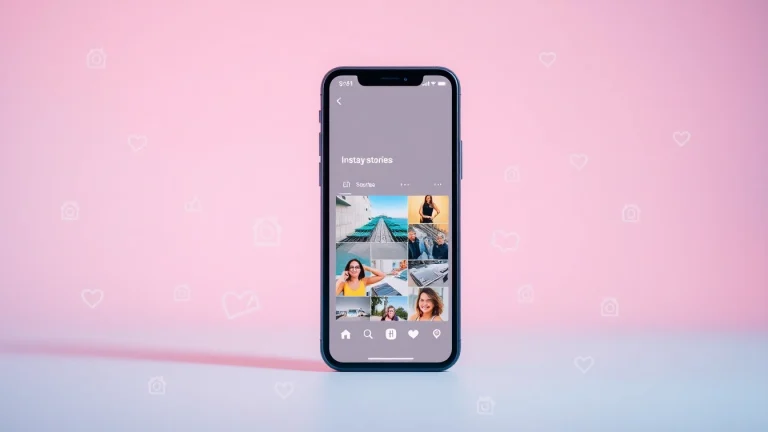
Crafting Impactful Website Design: Best Practices and Trends
Understanding the Basics of Website Design
Website design is a multifaceted discipline that encompasses various skills and knowledge in the creation and maintenance of websites. It is not merely about aesthetics; it’s a convergence of art and technology that aims to provide users with an engaging and functional experience. As companies and individuals strive to establish their online presence, mastering the essentials of website design has never been more important.
Defining Website Design and Its Importance
Website design refers to the planning and creation of websites, focusing on the visual layout, usability, and overall user experience. This field spans numerous skills, including web graphic design, user interface design, authoring, and standardized coding. The significance of website design lies in its ability to communicate a brand’s message effectively, engage users, and facilitate actions that lead to conversions—be it a product purchase, a subscription, or a service inquiry.
Key Elements of Effective Website Design
Effective website design comprises several critical elements that work harmoniously to create a cohesive and functional site. These include:
- Layout: The structure of the webpage, including the arrangement of text, images, and other elements.
- Color Scheme: Selection of colors that represent the brand and evoke intended emotions.
- Typography: The choice of fonts that ensure readability and align with the brand’s voice.
- Navigation: How users move through the website, ideally facilitating a seamless experience.
- Content: High-quality, relevant information that connects with the audience.
Common Misconceptions About Website Design
Misunderstandings about website design can lead to ineffective web solutions. Common misconceptions include:
- Design is only about looks: While appealing aesthetics play a role, functionality and usability are paramount.
- Any website can be designed by anyone: Professional knowledge and experience are crucial for a site that effectively meets business objectives.
- Website design ends after launch: Ongoing maintenance and updates are essential for a website’s success.
Best Practices in Website Design
Creating User-Centric Website Design
User-centric design is about understanding the target audience and creating a website that fulfills their needs. This can be achieved through thorough user research, creating personas, and usability testing. Websites should prioritize user experience, ensuring that visitors can easily navigate the site, find necessary information, and complete desired actions.
Importance of Responsive Website Design
With the increasing variety of devices used to access the internet, responsive web design is crucial. A responsive design ensures that a website looks and functions well on various devices, from desktops to smartphones. This adaptability not only enhances user experience but also improves search engine rankings, as search engines prioritize mobile-friendly sites.
Utilizing Visual Hierarchy in Website Design
Visual hierarchy is the arrangement of elements that leads a viewer’s eye through a webpage in order of importance. By using size, color, contrast, and spacing, designers can guide users to critical information and calls to action. Effective use of visual hierarchy can significantly impact user engagement and conversion rates.
Tools and Resources for Website Design
Popular Software for Website Design
Several tools and software solutions are available for web designers to create and manage websites effectively. Popular options include:
- Adobe XD: A vector-based design tool used for wireframing and prototyping user experiences.
- Sketch: A professional design toolkit primarily for web and mobile design.
- WordPress: A content management system that offers extensive design capabilities and plugins.
- Figma: A collaborative interface design tool suitable for real-time feedback and prototyping.
Web Design Templates and Themes
For those who may not have extensive design skills, pre-made templates and themes offer a quick and cost-effective way to create a professional-looking website. Many online platforms provide customizable templates that can be tailored to fit specific brand needs and objectives, allowing users to kickstart their online presence without extensive design expertise.
Finding Inspiration for Your Website Design
Inspiration can come from various sources. Designers often turn to current trends, competitor sites, and design showcases like Behance or Dribbble. Additionally, by keeping an eye on popular social media platforms, designers can discover innovative ideas that resonate with current user preferences.
Common Challenges in Website Design
Addressing User Experience (UX) Issues
Creating a website that resonates with users can be challenging. Common UX issues include complex navigation, unclear calls to action, and long load times. To tackle these problems, maintaining a user-centered design process, conducting user testing, and gathering feedback are essential steps during the design phase.
Overcoming Technical Limitations in Website Design
Technical limitations can hinder the design process. Issues such as incompatible browsers, outdated coding practices, or restrictive platforms can pose challenges. Emphasizing adherence to web standards and utilizing adaptive design technologies can help mitigate these limitations.
Balancing Aesthetics and Functionality in Website Design
It’s crucial to find a balance between an attractive design and functional capabilities. While captivating visuals can draw users in, the primary goal is to ensure that the website functions effectively. Designers should prioritize usability without sacrificing aesthetics, delivering a pleasant experience that converts visitors into customers.
Measuring Success in Website Design
Key Performance Indicators for Website Design
Measuring the success of a website design involves analyzing various key performance indicators (KPIs). These might include:
- Conversion Rate: The percentage of visitors who complete a desired action on the site.
- Bounce Rate: The percentage of visitors who leave the site after viewing only one page.
- Averaged Time on Page: Insights on how long users are engaging with content.
- Page Load Times: The speed at which a page loads, affecting user experience and search engine rankings.
Gathering User Feedback to Improve Website Design
User feedback is invaluable for enhancing website design. Surveys, usability tests, and analytics provide insights into user behavior and preferences. Implementing changes based on feedback can significantly improve user satisfaction and engagement.
Analyzing Trends and Making Adjustments in Website Design
The online landscape is continually evolving, influenced by emerging technologies and design trends. Regularly analyzing current trends and adjusting the website accordingly keeps the design fresh and aligned with user expectations, ensuring that the site remains relevant and effective over time.


